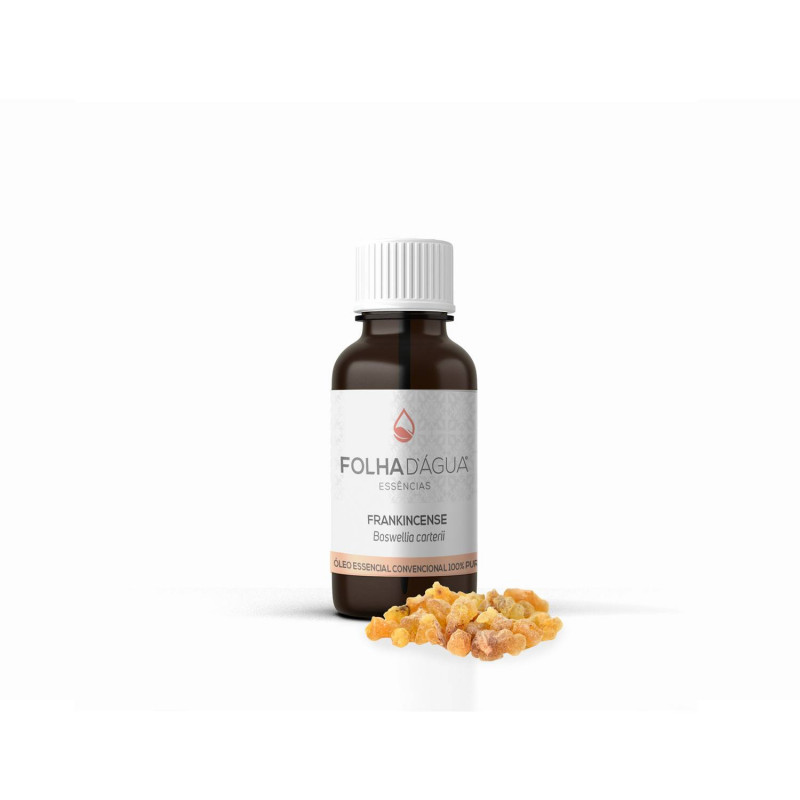



Frankincense oil (Boswellia carterii), also known by the common name Olibanum, is obtained by the steam distillation of the B. carterri resin.
Among the activities of its essential oil we highlight its anti-inflammatory and astringent action. This oil is used in perfumery and cosmetics, especially in skin care.
Main constituents: Vitamin C, retinoids, ellagic acid and alpha-hydroxy acids
Note: The information contained on this page is for educational purposes only.
The essential oil of wintergreen (Gaulhteria sp.) Has a fresh and herbaceous aroma. It is an oil with antiseptic, anti-inflammatory and anti-spasmodic properties. It is astringent, diuretic, expectorant, muscle relaxant and decongestant. Invigorating and soothing, relieves mental fatigue, fatigue and stress.
Main constituents: methyl salicylate.
Note: The information contained on this page is for educational purposes only.
Peppermint (Mentha x piperita) is a perennial rhizomatous herbaceous plant native to Europe. Aromatherapy with mint essential oil induces improved memory while its internal use has action at the level of the gastrointestinal tract, namely in the irritable bowel syndrome.
Main constituents: Menthol, mentone, menthyl acetate.
Note: The information contained on this page is for educational purposes only.
Orchid essential oil is known for the rejuvenating and soothing action of the skin due to its antioxidant properties, anti-inflammatory and cellular regeneration. It is mainly used in perfumery and cosmetics, characterized by its sweet and soft floral aroma.
This essential oil is obtained from the roots of the Vetiveria zizanoides plant. It is an oil with relaxing properties, very valuable in perfumery, where it is used as fixative. It has a strong woody scent, the earth.
Main constituents: khusimol (10.5%), isovalencenol (10.0%), α-vetivone (3.7%).
Note: The information contained on this page is for educational purposes only.
The exotic verbena is a plant native to Asia. Its essential oil is traditionally used in dermatitis, pruritus and acne. It is an antiseptic, deodorant and disinfectant.
Main constituents: citral, limonene, α-pinene
Lemon (Citrus limon) is a citrus fruit originating in Southeast Asia, having been introduced in Europe by the Arabs. Lemon essential oil has anxiolytic, antidepressant and analgesic capabilities.
Main constituents: Limonene, β-pinene, γ-terpinene.
PRECAUTIONS ON THE USE OF ESSENTIAL LEMON OIL:
May irritate sensitive skin. May cause photosensitivity.
Note: The information contained on this page is for educational purposes only.
The bergamot, similar to a small orange of yellow color, is cultivated in the region of Calabria. Its name comes from the city of Bergamo in Italy, because it was there that its oil was originally marketed in Europe from Morocco. Bergamot essential oil has been described as having relaxing action in aromatherapy as well as analgesic and neuroprotective capabilities.
Main constituents: Limonene, linalyl acetate, linalool.
PRECAUTIONS IN THE USE OF BERGAMOT ESSENTIAL OIL:
May irritate sensitive skin. May cause photosensitivity.
Note: The information contained on this page is for educational purposes only.
Its lemongrass essential oil (Cymbopogon flexuosus) has anti-fungal properties and is used as a bio-pesticide in crop protection. It also has deodorizing properties and aromatherapy is considered to be relaxing and anti-inflammatory.
Its properties can be used for the preparation of massage oils, creams and lotions.
Main constituents: Geranial, neral, geraniol.
The essential oil of Amyris or Sandalwood (Amyris balsamifera), is extracted by the distillation of the wood of this species. Scientific papers reveal that essential oils have anti-inflammatory and analgesic properties. In the industry it is used as fixative of aromas in perfumery.
Constituents: β-sesquiphellandrene, elemol, 10-γ-eudesmol, γ-eudesmol, valerianol, α-eudesmol, 7-α-eudesmol and β-eudesmol
Sage (Salvia officinalis) is a perennial shrub native to the Mediterranean. Its name comes from the Latin "salvare", conveying the importance attributed a long time to this plant. Its essential oil regulates the menstrual cycle and reduces fluid retention. It also has antibacterial properties, being used to relieve sore throats and to clean wounds and infected ulcers. It is used in cosmetics as it reduces excessive sweating and is optimal for oily skins.
Major constituents: cis-thione (25.9%), camphor (20%).
PRECAUTIONS IN USE:
Avoid using this essential oil during pregnancy as it can stimulate the uterine muscles. Contains tuiona, a compound with neurotoxic effects. If you suffer from epilepsy do not use this essential oil as it may promote epileptic seizures.
Geranium (Pelargonium graveolens) is a plant native to South Africa and widely cultivated in Italy, China, Egypt, Spain, France, Morocco and Japan. These constituents are used in perfumery and also in the insect repellent industry. The oil has the ability to reduce oiliness of the skin and is therefore widely used in the cosmetic industry. It has antiseptic, anti-depressive, anti-inflammatory and diuretic capabilities.
In aromatherapy is used in the fight against acne, cellulitis, tonsillitis, depressions, sore throats, kidney problems and insect repellent. Scientific research also suggests anxiolytic properties.
Main constituents: Citronellol, geraniol.
PRECAUTIONS IN USE:
Do not use during pregnancy, nor by people with hypersensitive skin.
A Grapefruit (Citrus maxima), also known as Pomelo or Grapefruit in English. It has properties like stimulation of the lymphatic and imonulógico systems. Thus it reduces cellulite and prevents colds and flu.
Rosemary (Rosmarinus officinalis) is a shrub from the Mediterranean coast. Among the activities of its essential oil we highlight its analgesic action by inhalation and anti-inflammatory.
Main constituents: 1,8-Cineole (41.3%), camphor (14.2%), α-pinene (13.3%).
Note: The information contained on this page is for educational purposes only.

Frankincense oil (Boswellia carterii), also known by the common name Olibanum, is obtained by the steam distillation of the B. carterri resin.
Among the activities of its essential oil we highlight its anti-inflammatory and astringent action. This oil is used in perfumery and cosmetics, especially in skin care.
Main constituents: Vitamin C, retinoids, ellagic acid and alpha-hydroxy acids
Note: The information contained on this page is for educational purposes only.